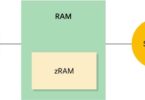New System Using Inkjet-Printed Liquid Metal Technology
Scientist have conceived a new system of using inkjet printing technology to mass produce electronic circuits of Inkjet-Printed Liquid Metal alloys for soft robots as well as flexible electronics.
The latest manufacturing method known as mechanically sintered gallium-indium nanoparticles aims on connecting inkjet printing in creating devices that are made of liquid alloys. According to Rebecca Kramer, an assistant professor of mechanical engineering from Purdue University, she states that `conductors that are made of liquid metal could stretch and deform without breaking and this process now enables to print flexible and stretchable conductors on anything, including elastic materials and fabrics.
The printable ink is made on dispersing liquid metal in non-metallic solvent with the use of ultrasound that tends to break up the bulk liquid metal into nanoparticles and this nanoparticle filled ink is suitable for inkjet printing.
Kramer is of the opinion that` liquid metal in its native form is not inkjet-friendly and hence they create liquid metal nanoparticles which are small enough to pass through an inkjet nozzle.
On Sonicating liquid metal in carrier solvent like ethanol, develops the nanoparticles as well as disperses them in the solvent, thus printing the ink on to any substrate. Theethanol evaporates and leaves behind the liquid metal nanoparticles on the surface’.
Elastic Technologies to Bring New Class of Pliable Robots
On printing, the nanoparticles should be joined by applying light pressure rendering the material conductive. This is essential since the liquid metal nanoparticles at first are coated with oxidized gallium that tends to act as a skin preventing electrical conductivity.
Kramer states that `being a fragile skin, when pressure is applied it breaks the skin and everything merges into a uniform film. This process could enable the possibility to rapidly mass produce large quantities of the film.
She further adds that they want to create stretchable electronics which could be compatible with soft machines, like robots which need to squeeze through small spaces or wearable technologies which are not restrictive of motion’.
The elastic technologies could bring about a new class of pliable robots with stretchable garments which individual could wear to interact with computers or for therapeutic purposes, though new manufacturing systems could be created prior to soft machine becoming commercially feasible, according to Kramer.
Researcher to Explore Interaction Between Ink & Surface
Researcher in the future would explore on how the interaction between the ink and the surface printing could be conducive to the production of certain kinds of devices.
For instance, on how the nanoparticles tend to orient themselves on hydrophobic versus hydrophilic surface and how can one formulate the ink and exploit the interaction with surface to help in self-assembly of the particles?
Besides this the researchers would also study and model on how individual particles break when the pressure is used and provide details which would enable manufacture of ultra-thin traces together with new kinds of sensors.
Results of the research on the method would be disclosed in the journal `Advanced Materials’ in April. The paper would be introducing the method known as mechanically sintered gallium-indium nanoparticles.
It would describe the research leading to the project which was authored by post-doctoral researcher John William Boley, graduate student Edward L. White and Kramer.






